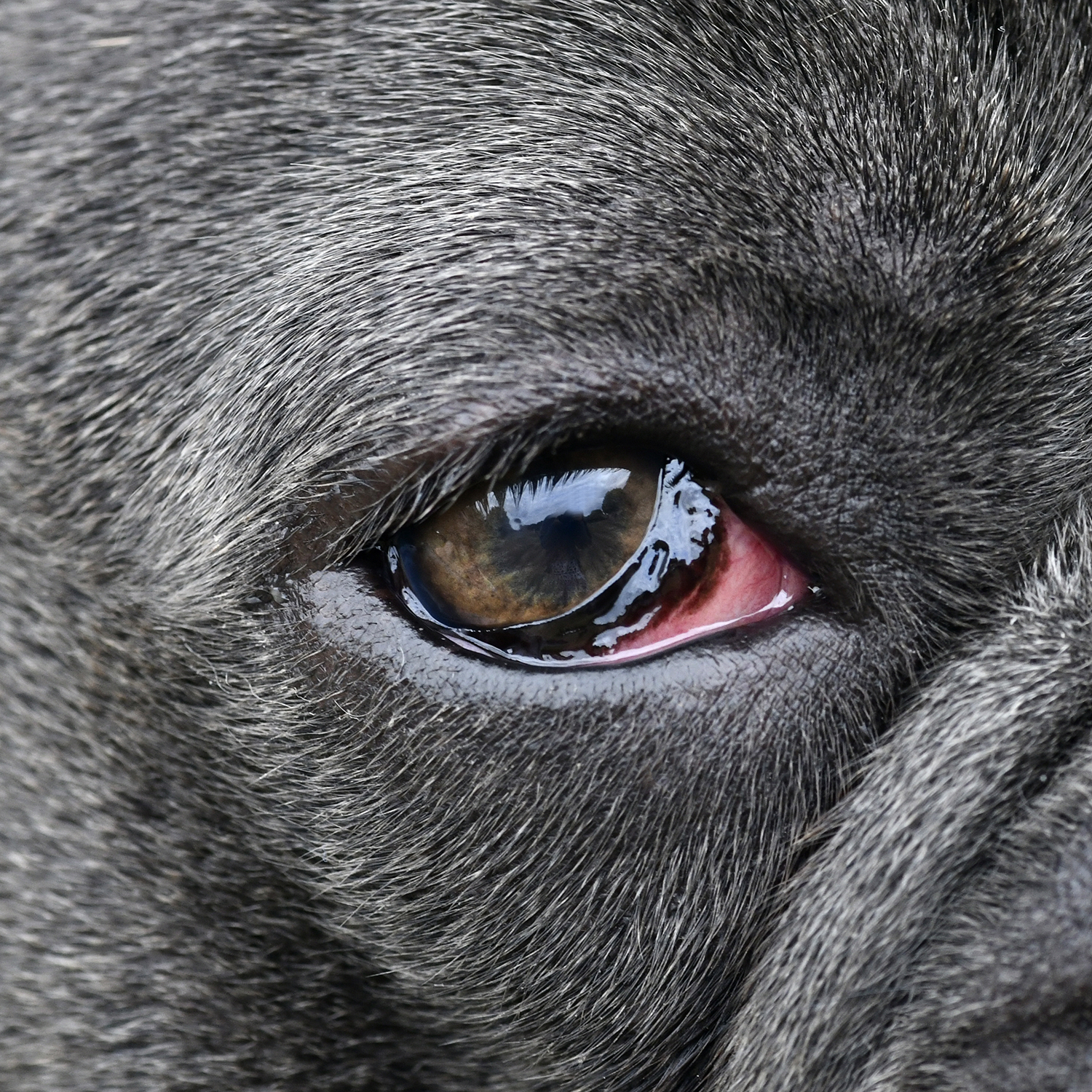Conjunctivitis is the number one eye problem we see in general practice
but not all eye boogers are the same
Let’s have a look at what it is, why it occurs and what you can do about it.
What is conjunctivitis?
The suffix 'itis' means inflammation. Conjunctivitis, therefore, means conjunctival inflammation.
To clarify, the conjunctiva is the vascularised moist tissue (mucous membrane) of the eye that:
covers the white part of the eyeball (the sclera) up to the edge of the cornea (this is the bulbar conjunctiva)
lines the inside of the eyelids including the third eyelid (this is the palpebral conjunctiva)
Since we’re looking at medical terms here, note that ‘lacri’ refers to tears.
Source: McCracken TO, Kainer RA and Carlson D. Color atlas of small animal anatomy: The essentials. Blackwell Publishing, 2008.
While we'll commonly diagnose pets with conjunctivitis, it's not a specific disease. It's really a description of inflammatory changes to part of the eye. There are multiple causes of this inflammation.
What causes conjunctivitis?
There are several causes of conjunctivitis:
Bacteria – it's unusual for bacteria to the primary cause of conjunctivitis, typically bacteria only get involved when the conditions of the conjunctiva change due to other causes
Viruses – less common in dogs than cats
Immune-mediated – there are several conditions in this category include atopy, follicular conjunctivitis, plasma-cell conjunctivitis and systemic diseases (like lupus)
Cancer and pseudocancer – fortunately, conjunctival cancers aren't common but we can see small lumps that look like cancers but aren't such as nodular episcleritis
We can also see conjunctivitis that is secondary to diseases of the tissues surrounding the eyes (called the adnexa), trauma or other eye diseases such as:
eyelids that roll inward (called entropion) allowing facial hair to rub the eye
lack of normal tear film causing the eyes to dry and become irritated (dry eye or keratoconjunctivitis sicca)
blocked tear ducts that lead to the skin around the eyelids staying wet and becoming irritated
irritation from dust, sand, chemicals, long hairs and eye medications
corneal disease (eg ulcerative keratitis)
inflammation of the front section of the eye (anterior uveitis)
increased pressure within the eye (glaucoma)
In many cases, the cause can be identified based on history, examining the eye and by simple tests such as a fluoro dye test to look for corneal ulceration and Schirmer Tear Test® to assess the tear film.
Some dog breeds are more prone to conjunctivitis such as those genetically predisposed to atopy and eyelid abnormalities (eg Bulldogs, Shar-peis).
What are the signs of conjunctivitis?
Whatever the underlying cause, the common signs of conjunctivitis are:
squinting or spasmodic blinking (this is called blepharospasm) and is a sign of discomfort
redness of the moist tissues of the eye (called conjunctival hyperaemia) – see below
discharge from the eye – varies from watery (clear) to mucoid (white/grey) to purulent (yellow/green)
fluid buildup (oedema) of the moist tissues of the eye (known as chemosis)
rubbing the eye
In some cases of allergic conjunctivitis, we might also see cobblestone appearance of the palpebral conjunctiva. Other signs will depend on the underlying cause.
French Bulldog with conjunctival hyperaemia
How is conjunctivitis treated?
The basic goals of treatment are to:
control the inflammation (with either topical or systemic anti-inflammatory medications)
control any bacterial infection present (with topical or systemic antibiotics)
prevent self-trauma (with an Elizabethan collar, if necessary)
When using topical treatments, gently clean away discharges before applying. You can safely clean the eye with green tea – make a cup of tea, allow it to cool and then soak a clean (non fluffing) cloth and use it to wipe the goobers away.
And if you need to apply more that one topical medication, wait several minutes between treatment. Other treatments will depend on what is causing the inflammation of the conjunctiva.
Whenever we're treating eye conditions, it's hugely important to let us know if things are not improving/worsening.




